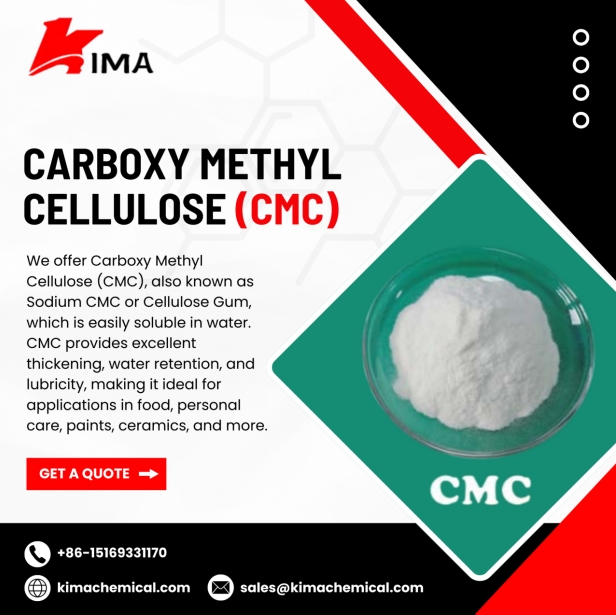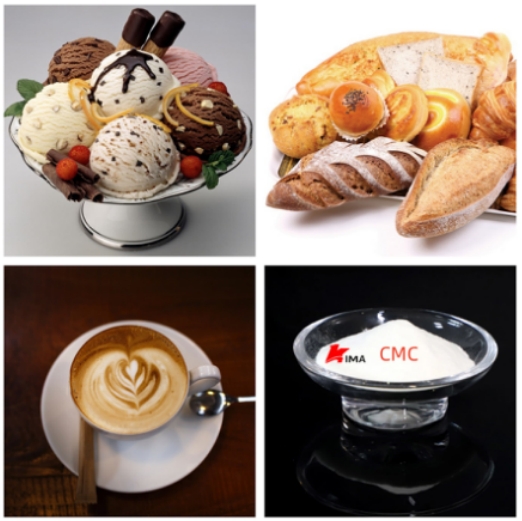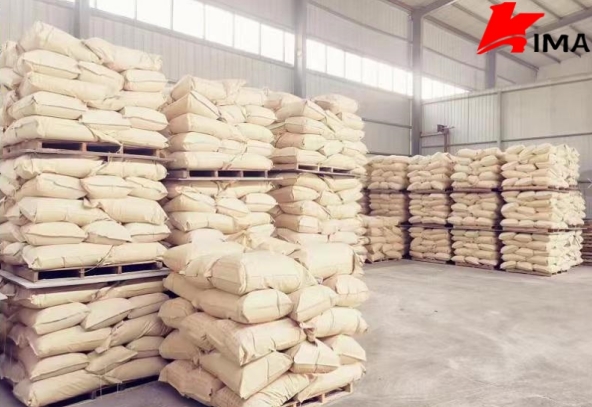Carboxymethyl cellulose (CMC) is a natural polymer compound widely used in the food industry. As a derivative of cellulose, it has good solubility, thickening, stability and viscosity adjustment ability, so it has been widely used in food processing.

1. Basic properties of CMC
CMC is a water-soluble cellulose derivative formed by introducing carboxymethyl (-CH2COOH) groups into natural cellulose through chemical reactions. It has the following basic properties:
Water solubility: CMC can dissolve quickly in water to form a transparent, viscous solution, which makes it an ideal thickener and stabilizer.
Thickening: CMC solution has a strong thickening effect and can effectively improve the texture of food.
Stability: CMC has good stability in both acidic and alkaline environments, and can maintain its physical and chemical properties under certain temperature and pH conditions.
Viscosity adjustment: By adjusting the concentration of CMC, the viscosity and fluidity of food can be precisely controlled.
Non-toxic and non-allergenic: As a substance of natural origin, CMC is considered safe and harmless to the human body at appropriate usage.
2. Use of CMC in food
Thickener: One of the most common applications of CMC is as a thickener. In foods such as condiments, beverages, jellies, jams, salad dressings, and soups, CMC can effectively increase the viscosity of foods and improve the taste. For example, in jellies and jams, CMC can form a uniform gel structure through its good thickening properties, giving these foods better texture and stability.
Stabilizer and emulsifier: In the processing of dairy products, ice cream, cream, and other dairy products, CMC can act as a stabilizer to prevent the separation of emulsifiers and oils, and maintain the uniformity and taste of dairy products. It can reduce the formation of ice crystals in the product, making the texture of ice cream and other frozen foods smoother and more delicate.
Food humectant: CMC can delay the loss of moisture in food by absorbing and retaining moisture. In baked foods such as bread, pastries, and biscuits, the addition of CMC can improve the moisture retention of food and keep it soft and fresh. In addition, CMC can also improve the storage stability of these foods and extend the shelf life.
Controlling sugar crystallization: In foods such as candy and chocolate, CMC can effectively control the crystallization of sugar, thereby improving the quality and stability of the product. By inhibiting the crystallization process, CMC can make the taste of candy and chocolate smoother and more uniform.

Improving dough handling performance: In the production process of bread, biscuits, steamed buns and other pastries, CMC can improve the ductility, elasticity and water absorption of the dough. It can improve the stability of the dough and reduce the cracks or deformation that may occur during processing, thereby improving the quality of the finished product.
Improver for low-fat foods: CMC has good hydration and can simulate the texture of fat. Therefore, in low-fat or reduced-fat foods, CMC can improve the taste and texture of the product, so that it still has a good taste and smoothness under low-fat conditions. For example, in products such as low-fat salad dressings and low-fat yogurts, CMC is often used to replace part of the fat.
Enhanced stability of beverages and juices: In liquid foods such as juices and functional drinks, CMC can help reduce precipitation and stratification in the liquid and maintain the stability of the beverage. It effectively inhibits the precipitation of solid substances by forming a protective film, making the appearance of the beverage clearer and more transparent, and the taste more uniform.
Application in low-sugar or sugar-free foods: In low-sugar or sugar-free foods, CMC can help increase the viscosity of the food and improve the taste. Especially in the use of sugar substitutes, the thickening effect of CMC makes these foods more attractive and can reduce the taste difference caused by sugar.
3. Advantages of CMC
Natural source and safety: As a derivative of natural plant cellulose, the application of CMC in food is widely accepted and has good safety. It does not contain any artificial chemical additives and meets the needs of modern consumers for natural and healthy foods.
Versatility: CMC has a wide range of functions. It can be used not only as a thickener, but also as an emulsifier, stabilizer, humectant, etc., and is widely used in many fields. By adjusting its molecular structure and concentration, its functional properties can also be adjusted to meet the needs of different foods.

Improve product quality: CMC can significantly improve the texture, taste and stability of food, making the product more competitive in the market. Whether in high-end food or ordinary consumer goods, the application of CMC can add value to the product.
Environmental friendliness and sustainability: The raw materials of CMC mainly come from renewable natural plants, and its production process is relatively environmentally friendly and will not cause too much burden on the environment. With the popularization of green environmental protection concepts, the application of CMC is more in line with the requirements of sustainable development.
4. Precautions for the use of CMC in food
Although CMC is widely used in food, the following points should still be noted when using it:
Use concentration: The use concentration of CMC needs to be adjusted according to the requirements of specific food. Excessive use may affect the taste and taste experience of the food.
Solubility: CMC has good solubility in water, but it may take some time to completely dissolve at high concentrations. It is necessary to ensure that it is fully dissolved when using it to avoid the appearance of granular substances.
Compatibility with other additives: CMC may interact with certain food additives (such as acidic substances, salts, etc.), affecting its performance. Therefore, it is necessary to pay attention to the compatibility between different ingredients when applying.
As an important food additive, carboxymethyl cellulose (CMC) is widely used in the processing of various foods due to its unique thickening, stabilizing, emulsifying and moisturizing properties, greatly improving the texture, taste and stability of food. With the continuous improvement of consumers' requirements for food safety and health, the application prospects of CMC are still very broad. However, it is still necessary to be cautious when using it to ensure that its concentration and use method are appropriate to achieve its best effect.
 English
English 日本語
日本語 français
français Deutsch
Deutsch Español
Español italiano
italiano русский
русский português
português العربية
العربية Türkçe
Türkçe Nederland
Nederland






